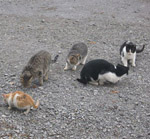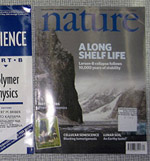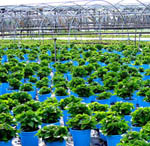The challenge of passively restoring farmland to natural fields
 Grassland,
Grassland,  Plants,
Plants,  Restoration
Restoration Researchers from the University of Sweden demonstrate that the passive restoration of abandoned farms to semi-natural grassland can take a very long time - greater than 50 years. However, the study also finds that sowing a mix of grassland seeds can aid establishment.
Lead author Mathias Öster and fellow researchers looked at formerly cultivated land in which the span of passive restoration ranged from 10 to 50 years. They compared species richness on these properties to adjacent semi-natural grasslands. They found that ex-cultivated fields of 50 years had been colonized by grassland plants to the greatest extent.
However, they found that for ex-cultivated fields of all age classes, species richness declined with increasing distance from the border with the adjacent semi-natural grassland. This suggests that adjacent semi-natural grasslands are the key source of plant colonization for the passively restoring fields, and this process takes substantially longer than 50 years.
Furthermore, the researchers speculate the passive restoration starting today may take even longer. The last fifty years has seen a substantial loss of semi-natural grasslands thereby reducing the availability of colonization sources today compared to the oldest passively restoring sites in the study.
On the bright side, the study also conducted sowing experiments on both the ex-cultivated and semi-natural fields and found that they were able to successfully establish grassland plants on all sites. The success rates were higher though in the semi-natural grasslands.
The researchers also tested for soil characteristics between sites to look for factors that might explain variations in colonization rates. But they found no significant differences in soil characteristics. They also looked at plant characteristics to see if any traits make species more likely to succeed in cultivated ex-cultivated fields but found no explanatory variable. The researchers conclude,
"Our study suggests that the slow natural colonization rate is because of establishment limitation across species, independent of field age, combined with dispersal limitation that is overcome by species as ex-arable fields become older. Nonetheless, as all of the sown grassland species in this study germinated and established to some degree even in young ex-arable fields, one option to increase restoration success may be to add seed artificially."
--Reviewed by Rob Goldstein
Öster, M., Ask, K., Cousins, S., & Eriksson, O. (2009). Dispersal and establishment limitation reduces the potential for successful restoration of semi-natural grassland communities on former arable fields Journal of Applied Ecology DOI: 10.1111/j.1365-2664.2009.01721.x




Reader Comments